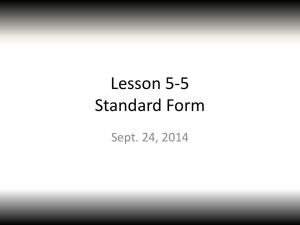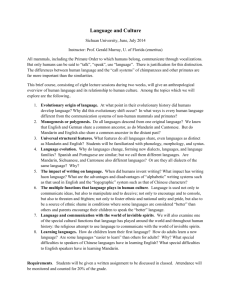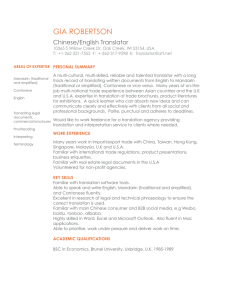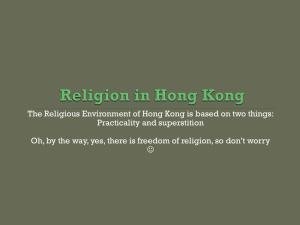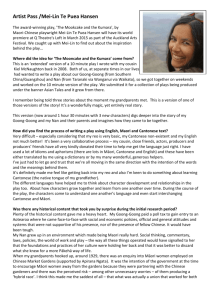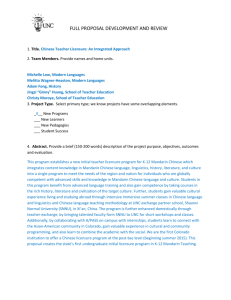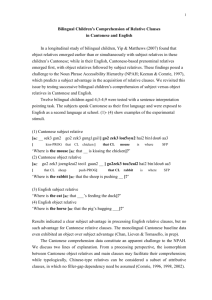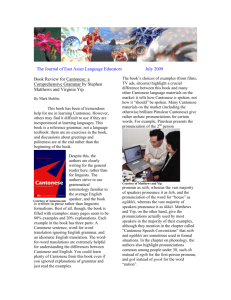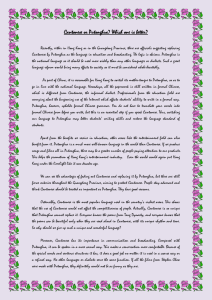L2: HK Identity
advertisement
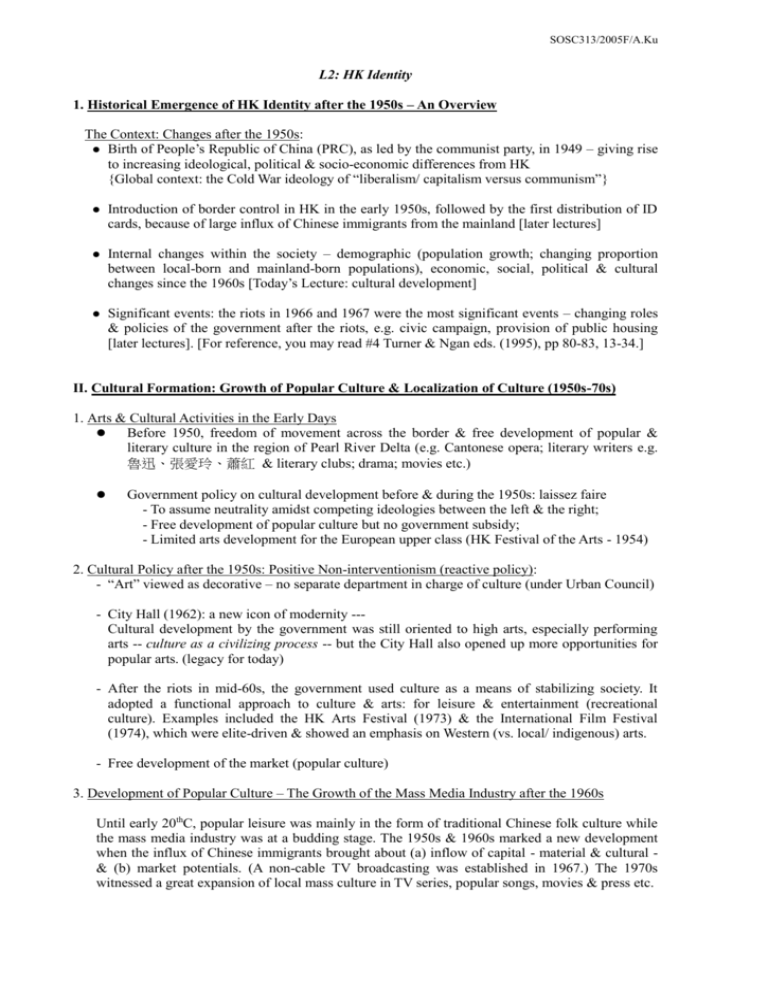
SOSC313/2005F/A.Ku
L2: HK Identity
1. Historical Emergence of HK Identity after the 1950s – An Overview
The Context: Changes after the 1950s:
Birth of People’s Republic of China (PRC), as led by the communist party, in 1949 – giving rise
to increasing ideological, political & socio-economic differences from HK
{Global context: the Cold War ideology of “liberalism/ capitalism versus communism”}
Introduction of border control in HK in the early 1950s, followed by the first distribution of ID
cards, because of large influx of Chinese immigrants from the mainland [later lectures]
Internal changes within the society – demographic (population growth; changing proportion
between local-born and mainland-born populations), economic, social, political & cultural
changes since the 1960s [Today’s Lecture: cultural development]
Significant events: the riots in 1966 and 1967 were the most significant events – changing roles
& policies of the government after the riots, e.g. civic campaign, provision of public housing
[later lectures]. [For reference, you may read #4 Turner & Ngan eds. (1995), pp 80-83, 13-34.]
II. Cultural Formation: Growth of Popular Culture & Localization of Culture (1950s-70s)
1. Arts & Cultural Activities in the Early Days
Before 1950, freedom of movement across the border & free development of popular &
literary culture in the region of Pearl River Delta (e.g. Cantonese opera; literary writers e.g.
魯迅、張愛玲、蕭紅 & literary clubs; drama; movies etc.)
Government policy on cultural development before & during the 1950s: laissez faire
- To assume neutrality amidst competing ideologies between the left & the right;
- Free development of popular culture but no government subsidy;
- Limited arts development for the European upper class (HK Festival of the Arts - 1954)
2. Cultural Policy after the 1950s: Positive Non-interventionism (reactive policy):
- “Art” viewed as decorative – no separate department in charge of culture (under Urban Council)
- City Hall (1962): a new icon of modernity --Cultural development by the government was still oriented to high arts, especially performing
arts -- culture as a civilizing process -- but the City Hall also opened up more opportunities for
popular arts. (legacy for today)
- After the riots in mid-60s, the government used culture as a means of stabilizing society. It
adopted a functional approach to culture & arts: for leisure & entertainment (recreational
culture). Examples included the HK Arts Festival (1973) & the International Film Festival
(1974), which were elite-driven & showed an emphasis on Western (vs. local/ indigenous) arts.
- Free development of the market (popular culture)
3. Development of Popular Culture – The Growth of the Mass Media Industry after the 1960s
Until early 20thC, popular leisure was mainly in the form of traditional Chinese folk culture while
the mass media industry was at a budding stage. The 1950s & 1960s marked a new development
when the influx of Chinese immigrants brought about (a) inflow of capital - material & cultural & (b) market potentials. (A non-cable TV broadcasting was established in 1967.) The 1970s
witnessed a great expansion of local mass culture in TV series, popular songs, movies & press etc.
SOSC313/2005F/A.Ku
4. Localization of Popular Culture (Mass Culture)
Until the 1960s, the mass media industry fed primarily on traditional Chinese culture & imported
cultural products from overseas. There was little sense of a local popular culture with distinctive
characteristics of its own. The 1970s marked the birth of local consciousness in popular culture.
4.1 Language/ Dialect
[1940s-60s]
Co-existence of different dialects in radio programs
Cantonese songs (e.g. “賭仔自嘆”) representing lower taste than Mandarin songs [center]
English songs – e.g. the “Beatles” fever (their visit to HK in 1964) – symbolizing “modernity”
Inroad of Mandarin songs from Taiwan (e.g.【負心的人】
、【今天不回家】)
Predominance of Mandarin movies from Shanghai (legacy of the tradition of the 30s & 40s)
Growth & decline of Cantonese movies (50s-70s)
Cantonese being considered as an informal or lesser language, or as bad Chinese writing
Major Change since the 1970s
Increasingly establishing the predominance of Cantonese as the HK language in popular culture
― this would mean both acknowledging the centrality of the Chinese language and displacing
Mandarin as a non-local, hence more peripheral, medium in society
(Irony: yet without challenging the privileged status of English as the dominant language)
4.2 HK-Centred Perspective
Content-wise, the early movies were China-centred rather than HK-centred - mostly about national
honor and disgrace (“電影救國”), foreign aggression, rural problem, or traditional family
relationships (e.g. 【家春秋】). After WWII, a great deal of media texts showed a primary concern
with the “here and now” aspect of life in HK (e.g.【危樓春曉】
、
【可憐天下父母心】
、
【獅子山下】).
A HK-centred perspective was most conspicuous in the stereotyping of “mainlander” e.g. “阿燦”.
4.3 Distinctive HK Culture/ Style (further discussion in Lecture 3)
[Hybridity - consisting of both Chinese & Western elements, & yet representing neither.]
E.g. Cantonese Movies
Breakthrough in the late 70s & the 80s:
- i) comedy e.g. 【鬼馬雙星】;
- ii) new Kung-fu genre e.g. 李小龍系列、劉家良的【洪熙官】
、袁和平的【醉拳】etc.
New generation: 王晶、吳宇森、麥當雄、成龍 etc.
New wave of Cantonese movies: e.g. 許鞍華、方育平、徐克
5. Food For Thought
(a) The market logic of popular culture – mass culture1
(b) The sense of HK identity/ culture – what will you pick as the visual symbol of HK?
In Search of a Visual Symbol (Icon) of HK …
- US : the Statue of Liberty (symbol of freedom)
- Britain : the clock tower of the parliament (symbol of democracy)
- HK? 「旅遊協會強調香港的圖像是一個帆船與電腦兼容並包的拼湊,香港的魅力正在於它既傳統又現代。
我卻恐怕拼湊底下,既無傳統,亦不現代,徹底游離 …. 如果『現代』精神是代表重理性、講開明、事事
尋根究底、處處奮發自強,那麼我們的『現代』只是眼大無神,徒具驅殼 …. 旅遊協會找成龍做旅遊大使,
其實可圈可點 ….」(梁款 1997, p.111 #14)
- “flying dragon” ??
For a general theoretical discussion of the issue, you may read [#11] 張志偉 (2002),載吳俊雄、張志偉編,
頁 69-85。For a brief review of local discussion, see #2 谷淑美(2002), pp. 366-369.
1

